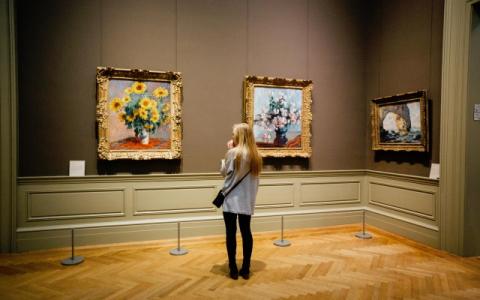
The Covid-19 pandemic also had a strong impact on people's cultural lives. This is demonstrated by the reduction in the number of visitors to museums highlighted by the data of the Observatory #Conibambini, published on the website of the social enterprise With the Children, which reveals how this trend has mainly affected the youngest: in fact, the under-18s represent the only age group for which the post-Covid-19 decrease was more than 10 percentage points between 2019 and 2020
"Seen from a longer-term perspective," the social enterprise's website states, "the pandemic crisis has also interrupted a growing trend in access to museums by children," who were actually the most frequent visitors until 2020.
As confirmed by other data from the Observatory, museums are designed above all for the enjoyment of an adult audience: even today, on average, less than one museum in five has dedicated itineraries and information support for children; more than half have an educational workshop in which specific activities for young people and school children can be developed, but this is a national average ranging from 73% in Trentino Alto Adige to 35% in Sicily.
The extension of services and reception models aimed at the youngest children therefore represents a crucial challenge for the Italian museum system, which is an integral part of the tools for combating educational poverty.
"If well organised," explains the Conibambini website,"visits to museums and exhibitions can be significant moments in the education of children. These are in fact educational experiences that take place outside the school environment, in a setting that can enhance the child's learning by appealing to his or her curiosity. This is why it is so important to strengthen the collaboration between the school and the network of museums in the area and to "multiply" this type of cultural opportunity. All the more so in the recovery phase of a pandemic that - by necessity - has greatly reduced this type of experience. In the first instance, in areas where access to the museum by children was more sporadic even before the pandemic."
The data show that the core municipalities - the main cities, central in terms of services - almost always have at least one museum, but in southern cities the offering is less extensive, especially in relation to resident children and young people. With an average of 5 facilities for every 10,000 minors, in fact, the quota varies greatly, starting from the largest cities: it rises to 12.4 in Florence and 8.4 in Bologna, while it is below average in three large southern cities: Catania (1.68), Bari (2.06) and Naples (2.21). At the same time, central municipalities are the ones most often equipped with museums: more than 90% have at least one museum. It rises to 23% in the outer municipalities, the hinterland of the largest cities, while in the inner (intermediate, peripheral and outermost) municipalities the share is around 30%.
The data are available on the dedicated page of the website.
The observatory on educational poverty #Conibambini was born from the collaboration between the social enterprise Conibambini and the Openpolis Foundation to encourage debate on the plight of children in Italy, starting from the educational, cultural and social opportunities offered. The objective is to help decision-makers implement policies to support children and young people living in a state of hardship, through the creation of analyses and insights available to all those who deal with the issue of child educational poverty in various capacities.
Other materials and news can be found on this site under the topics Leisure and cultural activities and Children and Covid-19, accessible from the "Topics" navigation menu.

